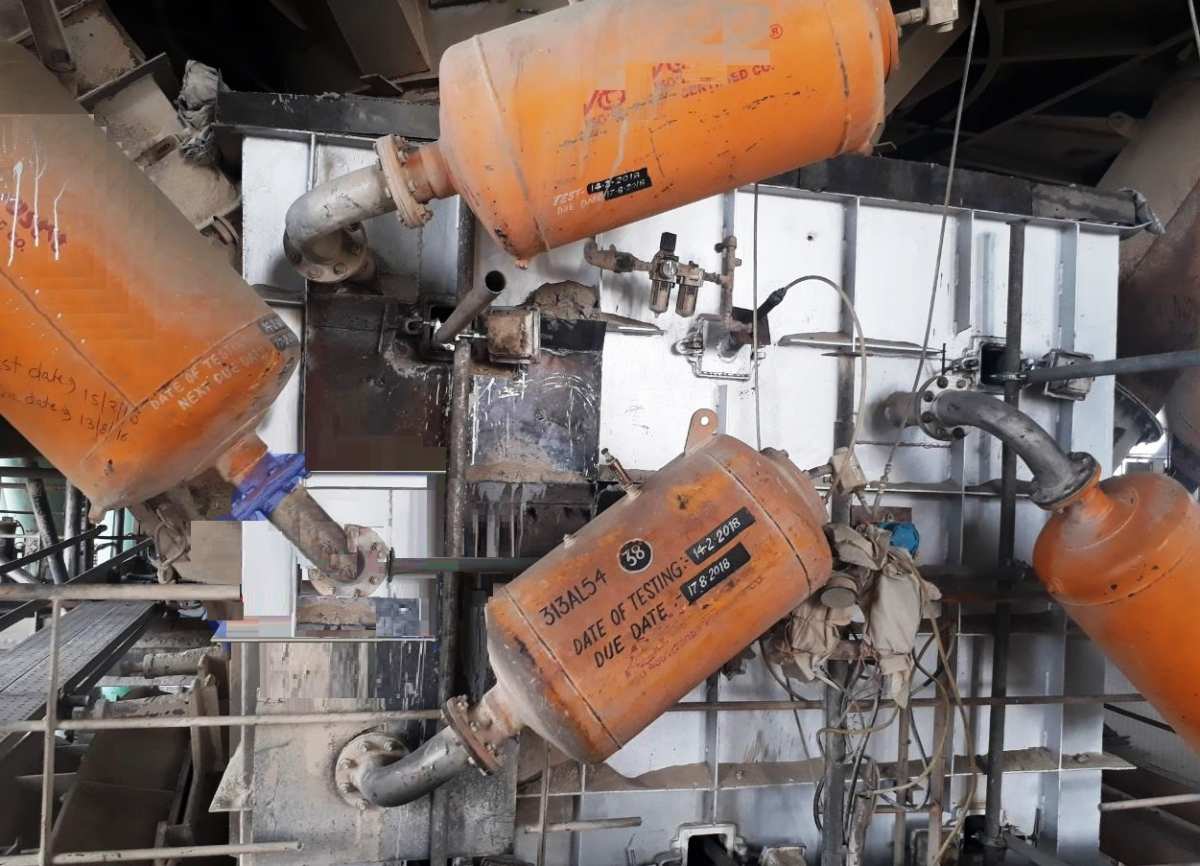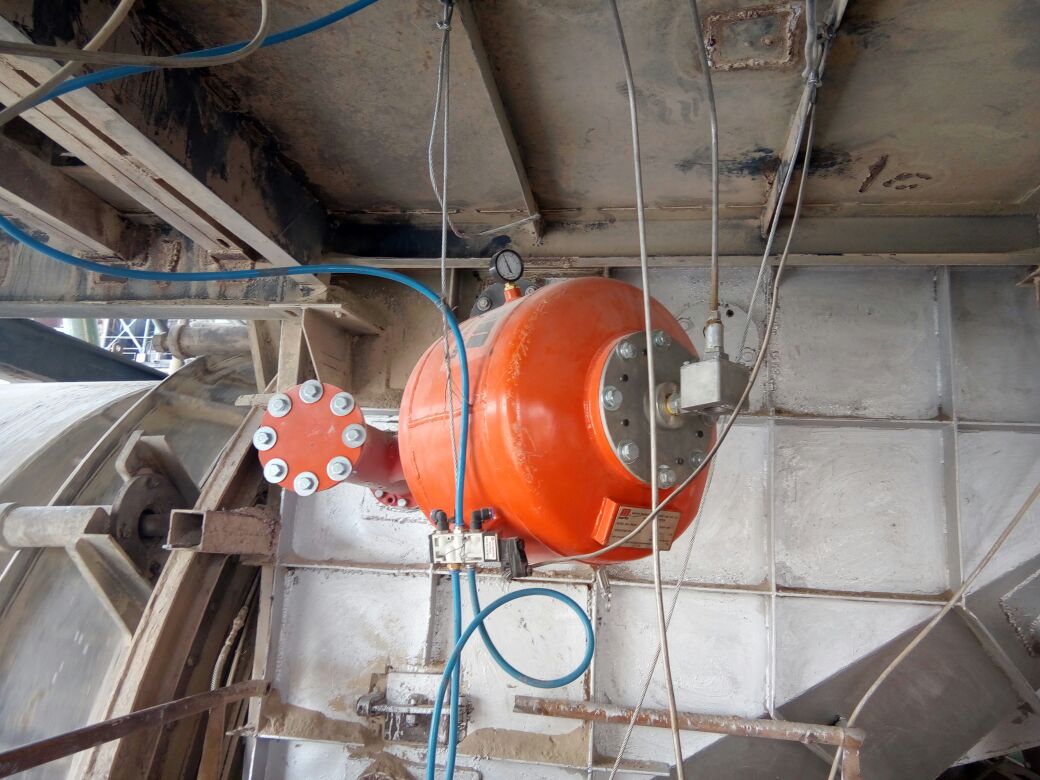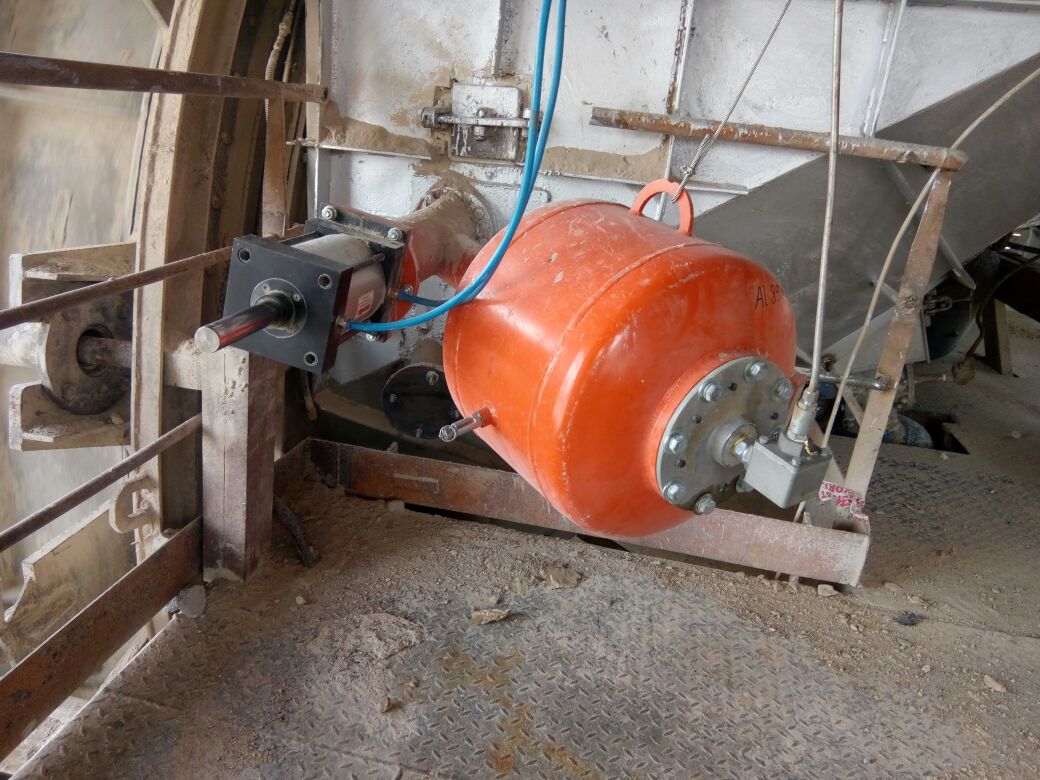| Products Used | SMART™ Series Retractable Nozzle 360° , Typhoon Air Cannon |
|---|---|
| Product Types Used | Air Cannon Solutions , Air Cannons , SMART™ Series Nozzles |
| Industry | Cement |
| Customer | Nuvoco Vistas Corp. Ltd., Chittorgarh Rajasthan, India |
Problem
The Chittor Cement Plant in Northwest India was experiencing considerable residue buildup in the kiln inlet and riser ducts of its preheater tower. To remedy the buildup, plant managers had installed 10 large 150 L and 300 L air cannon tanks on straight pipe assemblies with fan jet nozzles. Operators discovered that the large tanks taxed the plant's compressed air system, without completely resolving the problem. Exposed to high temperatures and abrasion, when the fan jet nozzles failed, replacing the nozzles required confined space entry and removal of the refractory using tools and blow torches. Managers sought a safer, more sustainable solution that more effectively removed the build-up.

Solution
Operators invited Martin Engineering India to examine the issue and offer a solution. Technicians installed eight 70 liter Martin® Typhoon Air Cannons, 6 fixed SMART™ Series Nozzles and 2 retractable SMART™ Series Nozzles. The Typhoon features a hybrid valve concept that provides more force with less air using only one line to fill the tank and trigger the valve. Mounted on a permanent Y-pipe assembly, the tank has an outer facing valve, allowing easy access for maintenance. The flange secures the nozzle inside the assembly, making replacement and maintenance a one-person job with no downtime. The retractable design features a 360° nozzle head that withdraws after firing, protecting it from abrasion and extreme temperatures.

Result
After 6 months of operation, workers and managers report being very happy with the performance. The higher-efficiency tanks have reduced the burden on the compressed air system by 50%. The equipment life of the nozzles has increased, and maintenance and replacement of the nozzles requires fewer people and less time, with no required downtime. "The safety and ease of maintenance has improved plant performance," said an operator involved in the project. "The lower labor cost and increased uptime offers an excellent return on investment." Managers have placed an order for 11 no's of 70 liter Martin® Typhoon Air Cannons and 16 no's of SMART™ Series Nozzles.
